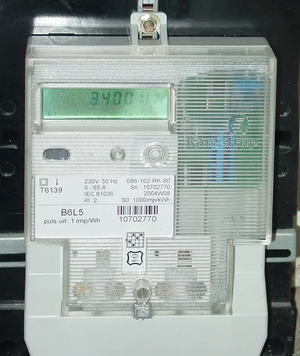Real-time electricity tariffs to increase use of renewables and reduce prices

(From our GLD October 2018 newsletter)
Real-time electricity tariffs to increase use of renewables and reduce prices
As intermittent renewables are increasingly used to generate electricity for the grid, and as demand will continue to vary hour by hour and day by day, balancing supply and demand gets harder. If demand could be shifted away from when it is higher than (easily produced) supply and towards when available supply is more than demand, this would be a big help.
More renewables could be used by the grid, and electricity would be cheaper, because less rarely-used generating capacity would be needed.
Time shifting can be achieved by real-time tariffs that follow the varying price paid by the National Grid (to balance supply and demand), as described in the paper:
(I am down as the author, but the editor, Richard Balmer, was heavily involved.)
It was written over 3 years ago. Reading it again, I would add:
- A guarantee could be given that, over a year, a hypothetical user whose pattern of usage follows the national pattern of demand would be better off. If this is not so, an appropriate % should be refunded on everyone's bill.
- OFGEM could require that the big 6 suppliers must offer tariffs, and make them sufficiently attractive so they get a (rising) pre-set % of their customers on the tariff each year. This would give confidence to producers of smart products such as freezers..
- The quite large distribution costs can be recovered by a standing charge, a fixed extra p/kWh, or a % uplift on the tariffs. I prefer a % uplift, as it will mean very low/free grid prices are reflected in the tariff, and it also helps low users.
- Currently, the most advocated approach to dealing with intermittency is batteries, but real-time tariffs are cheaper, and better at dealing with extremes such as blackouts. The latter is because the economics of battery use is not to cater for rare extremes, whereas real-time tariffs allow the price to fluctuate wildly, increasing incentives for time-shifting demand during extreme high or low prices. But other approaches such as batteries will also be needed.
- A simpler alternative to real-time tariffs is to extend time-of-day type tariffs (e.g. Economy7) to have several more time bands and prices, such as a high price for early evening. This approach will lead to time shifting, but real-time tariffs are better, because they respond to the actual spot price which is affected by weather, season, power station breakdowns etc. When balancing supply and demand, they can offer bigger and better-timed incentives, for example when the grid is close to blackouts.
- Two examples of smart products are:(a) Freezers that lower their thermostats before high price periods, and raise them during high prices. This slightly increases the kWh's used, but is cheaper to the user, and helps balance the grid. For extremely high prices, the scale and duration of the thermostat adjustment can be increased.(b) TVs could, during very high prices, switch to an eco/dim mode, or even be turned off.In my view, real-time prices should be set by the actual spot price. An alternative could be that it is set by the predicted price 24 hours previously so people know the price further ahead.
Stewart
( Please use this Facebook Page for comments on this article )